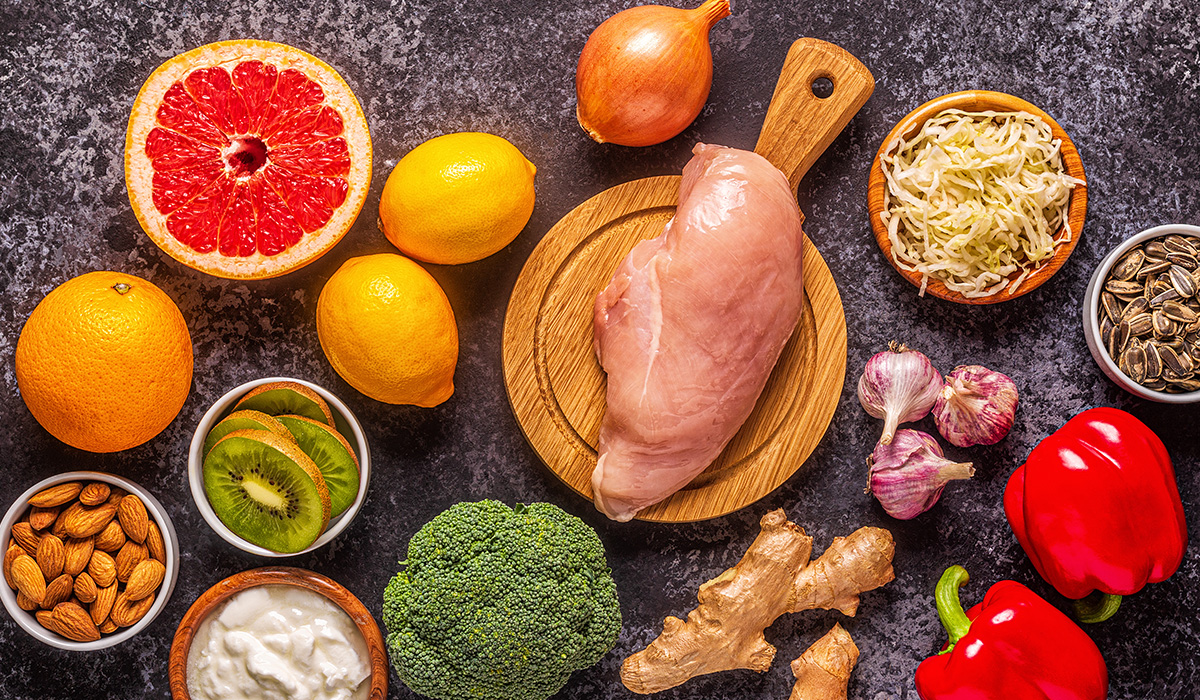The Whole30 diet is a viral health movement that is increasing in popularity. It encourages followers to cut out alcohol, sugar, grains, legumes, dairy, and additives from their diet for 30 days, and is advertised as a total lifestyle change. Followers rave about its health benefits, while critics claim that it is just another unsustainable diet fad, here we check it out.
WHAT IS THE WHOLE30 DIET?
The Whole30 diet is a month-long clean-eating programme that promises a variety of health and emotional benefits. It was developed in 2009 by two certified sports nutritionists who promoted it to reset your metabolism and reshape your relationship with food. The diet focuses on the idea that certain food groups may negatively affect your health and fitness. Therefore, eliminating these foods from your diet is supposed to help your body recover from the negative effects and promote long-term health. Most people follow this diet in the hope of losing weight. However, some may also use the programme to identify food intolerances or achieve some of its proposed health benefits.
HOW TO FOLLOW THE WHOLE30 DIET
The idea behind the Whole30 programme is simple — just completely cut out foods that may harm your health for a period of 30 days. After the initial 30 days, slowly reintroduce the foods you miss, while monitoring the effects they have on your body. The diet has a strict set of rules. It also provides you with a list of allowed foods, as well as a list of off-limit foods. During the month-long elimination period, no cheating is allowed.
GOING OFF-TRACK ENTAILS STARTING THE CHALLENGE OVER FROM DAY ONE.
The founders claim that strict adherence allows your body to reset in isolation of certain foods that may cause inflammation, gut disruption, or hormone imbalances. Unlike other diets, there is no need to track calories, measure portions or count points. Also, weighing yourself is strictly reserved for days 1 and 30.
PROPOSED BENEFITS OF THE WHOLE30 DIET
Following the Whole30 diet perfectly for 30 days is said to have many health benefits. These include fat loss, higher energy levels, better sleep, reduced food cravings and improved athletic performance. What is more, the diet’s founders promise it will change the way you think about food, as well as your taste. Proponents of the diet further claim that it can alter the emotional relationship you have with food and your body. Although these claimed benefits may appear attractive, it is worth keeping in mind that there are currently no scientific studies backing them up.
FOODS TO EAT
Foods allowed on the Whole30 diet consist of minimally processed foods, including:
- MEAT AND POULTRY: Beef, veal, pork, horse, lamb, chicken, turkey, duck
- FISH AND SEAFOOD: Fish, anchovies, shrimp, calamari, scallops, crab, lobster
- EGGS: All types, as well as foods made from them, such as homemade mayo
- FRUITS: Fresh and dried fruits, although fresh is preferred
- VEGETABLES: All types of vegetables
- NUTS AND SEEDS: All types of nuts and seeds besides peanuts, which are technically a legume. Nut milks, nut butters and nut flours are also allowed
- SOME FATS: Healthy plant oils, coconut oil, duck fat, clarified butter and ghee
When minimally processed foods must be used, the diet encourages you to opt for those with the shortest ingredient lists that only contain ingredients you know.
POTENTIAL NEGATIVE EFFECTS OF THE WHOLE30 DIET
Several aspects of the Whole30 programme are in line with a nutritious diet. For instance, the diet promotes consuming minimally processed foods and a high intake of fresh fruits and vegetables. However, avoiding nutrient-rich foods like legumes, soy and dairy may make it more difficult to meet all your daily nutrient recommendations. This may create negative health effects if the diet is continued for more than 30 days.
In addition, although rigid rules can be an effective way to reset eating habits for some people, restrictive diets with no allowance for indulgences are not sustainable over time. Those contemplating following this diet in the long term are encouraged to record their meals for a couple of days. This can help ensure that daily nutrient recommendations continue to be met.
FOODS TO AVOID
During the 30-day diet, certain foods must be eliminated. These include:
- SUGAR AND ARTIFICIAL SWEETENERS: Raw sugar, honey, maple syrup, agave syrup and all products containing these sweeteners, as well as artificial sweeteners
- ALCOHOL: All types of beer, wines, liqueurs, and spirits
- GRAINS: Regardless of their degree of processing, all grains, including wheat, corn, oats, and rice, are to be avoided
- PULSES AND LEGUMES: Most peas, lentils, and beans, including peanut butter, should be avoided. Green beans, sugar snap peas and snow peas are exceptions
- SOY: All soy, including tofu, tempeh, edamame, and all products derived from soy, such as miso and soy sauce
- DAIRY: Including cow, goat and sheep’s milk, yogurt, cheese, ice cream and other products derived from dairy Clarified butter or ghee is allowed.
- PROCESSED ADDITIVES: Any food or beverage containing these ingredients should be avoided
In addition, the diet recommends that you avoid recreating your favourite baked goods, snacks or treats — even with Whole30-approved ingredients. Thus, foods such as cauliflower pizza crust and paleo pancakes must be avoided.
THERE’S ALSO NO SUCH THING AS A CHEAT MEAL ON THIS DIET. INSTEAD, YOU’RE ENCOURAGED TO ADHERE STRICTLY TO THE GUIDELINES ALL THE TIME.
IF YOU DO SLIP UP, THE DIET’S FOUNDERS STRONGLY ENCOURAGE YOU TO BEGIN THE WHOLE PROGRAMME AGAIN FROM DAY ONE.
A FEW ADDITIONAL RULES
The Whole30 diet encourages some additional rules that are not related to diet. For instance, smoking is forbidden for the duration of the diet. You are also not allowed to step on the scale on any days other than days 1 and 30 or partake in any form of body measurements. The justification behind these additional rules is that the Whole30 programme is about more than just weight loss. Following these rules is promoted to change your mindset and promote long-term health.
LIFE AFTER WHOLE30: THE REINTRODUCTION PHASE
Once you’ve successfully completed the Whole30 programme, it is time to focus on step 2 — THE REINTRODUCTION PHASE.
In this phase, certain foods will be slowly reintroduced to evaluate how they make you feel regarding your metabolism, digestive tract, immune system, and relationship with food. The suggested way to reintroduce off-limit foods is to add back only one food group at a time. For instance, milk can be reintroduced on day 1.
You are then encouraged to return to the Whole30 diet and avoid milk on days 2–4, while paying attention to any potential symptoms. If all goes well, a different food group can be reintroduced on day 5, repeating the process. Reintroducing only one food group at a time while keeping the rest of the diet the same is promoted to better identify which foods cause negative symptoms, such as bloating, skin breakouts or achy joints.
Once all food groups have been individually tested, those that were well-tolerated can be added back into the diet. Naturally, individuals are not required to reintroduce all foods. In fact, they are strongly encouraged to avoid reintroducing foods that they do not miss.
A WEEKLY SAMPLE MENU FOR THE WHOLE30 DIET
Those interested in giving the Whole30 diet a try can start with the following week-long menu suggestions.
MONDAY
- BREAKFAST: Sweet potato hash with apples, sausage, and eggs
- LUNCH: Chicken salad, baby spinach and pomegranate seeds served in an acorn squash bowl
- DINNER: Garlic shrimp in a Romesco sauce, served over zucchini noodles
TUESDAY
- BREAKFAST: Fried egg and veggie sandwich served on a sweet potato slice
- LUNCH: Soup with homemade meatballs and kale
- DINNER: Stuffed mushrooms made with meatballs, avocado, tomato, and alfalfa sprouts
WEDNESDAY
- BREAKFAST: A butternut, cinnamon, and date smoothie
- LUNCH: Zucchini patties and a side salad
- DINNER: Sweet potatoes stuffed with chili, veggies, and avocado slices
THURSDAY
- BREAKFAST: Soft-boiled eggs and asparagus wrapped in prosciutto
- LUNCH: Ground pork served in cabbage
- DINNER: Cod topped with bruschetta and a side of broccoli
FRIDAY
- BREAKFAST: Smoothie made with pears, plums, apples, bananas, avocado, and parsley
- LUNCH: Frittata made with smoked salmon and asparagus
- DINNER: Roasted chicken served with cranberries and winter vegetables
SATURDAY
- BREAKFAST: Poached eggs in a spicy tomato sauce
- LUNCH: Mini burgers made with turkey, bacon, plantains and served with a cilantro aioli sauce
- DINNER: Duck and vegetables prepared in a slow cooker
SUNDAY
- BREAKFAST: Stuffed avocados containing crab, shrimp, and red peppers
- LUNCH: Baked zucchini halves stuffed with ground beef in a tomato sauce
- DINNER: A stew made with beef, butternut squash, onions, and mushrooms
Remember to vary your sources of protein and vegetables throughout the day to provide your body with all the vitamins and minerals it requires.
WHOLE30 SNACK IDEAS
Snacks are a wonderful way to stay energized throughout the day and keep hunger between meals at bay. Interesting Whole30-approved options include:
- Plantain chips with salsa or guacamole
- Apple with hazelnut butter
- Banana ice cream made from blended frozen bananas
- Seaweed snacks
- Trail mix (without peanuts)
- Almond milk latte
- Prosciutto and melon
- Carrots with almond butter sprinkled with cayenne pepper
- Hard-boiled eggs
- Walnut-stuffed figs
- Frozen fruit and coconut milk smoothie
SHOULD YOU TRY THE WHOLE30 DIET?
It is a well-known fact that a calorie deficit is needed for weight loss. Because of its restrictive nature, the Whole30 diet will help create the calorie deficit you need to shed some extra pounds. However, unless the food choices you make on this diet become a habit, the weight loss you experience may not be sustainable in the long term.
As for the benefits, there are no scientific studies available to support the claims. There is also no strong reason to restrict dairy, grains, or legumes.
Nevertheless, it is true that some people may unknowingly suffer from food intolerances, which the diet’s reintroduction phase can help identify.
Overall, this diet may be helpful if you want to completely reset, you are eating habits. But if you are simply looking to improve your diet and overall health, you are better off trying a whole foods diet like this one instead.


